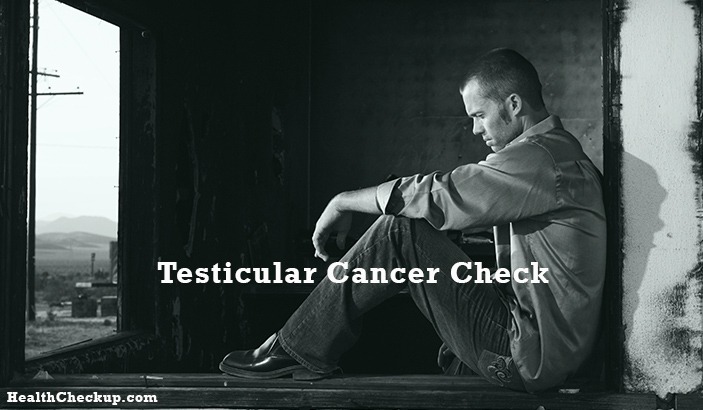You must have heard of various types of cancers, but have you ever heard of the cancer of the testis, which is also called as testicular cancer? Well, it would not be surprising if you haven’t because compared with other types of cancer, testicular cancer is rare in these parts. But testicular cancer is quite common in American males between the ages of 15 and 35.
What is Testicular Cancer?
Testicular cancer occurs in the testicles or the testes, which are located inside the scrotum. The scrotum is a loose bag of skin underneath the penis. The testicles produce male sex hormones and sperm for reproduction.
The greatest advantage of testicular cancer is that it is highly treatable, even when the cancer has spread beyond the testicles. Depending on the stage of testicular cancer, the type of treatment can be determined. It should be remembered that regular testicular self-examinations can help identify cancer growths early, when the chance for successful treatment of testicular cancer is highest.
Testicular Cancer Symptoms
While check for testicular cancer, most cancers can be detected at an early stage.In some men, early testicular cancers can cause symptoms that make them seek medical attention. Most of the time testicular cancer signs include a lump on the testicle. Sometimes, the testicle becomes swollen or attains a larger than normal size without a lump. Many men do not notice that something is wrong until the cancer has spread to the neighboring areas.
Check for Testicular Cancer
Most doctors agree that check for testicular cancer is essential and should form a part of a routine cancer-related checkup. A number of cancer societies and health groups advise men to be aware of testicular cancer and see a doctor right away if they find a lump on a testicle. Some doctors recommend that all men examine their testicles monthly after puberty. Men with additional risk factors, such as an undescended testicle, previous testicular cancer, or a family member who has had testicular cancer should take monthly self-exams.
Causes of Testicular Cancer
The causes check for testicular cancer are not fully understood nor clearly known, but, we do know about several things that increase the risk of testicular cancer.
Some risk factors for testicular cancer are:
- Undescended testicles is the most significant risk factor.
- Men who have previously been diagnosed with testicular cancer are more likely to develop testicular cancer in the other testicle.
- Unlike most other types of cancer, testicular cancer is more common in young and middle-aged men.
- Having a close relative with a history of testicular cancer increases the risk of developing testicular cancer.
How to Do a Testicular Self-Exam?
We have told you the importance of a testicular self-exam. Here are instructions on how to do the self-exam.
- Stand in front of a mirror and check for any swelling on the scrotal skin.
- Examine each testicle with both hands. Place the index and middle fingers under the testicle with the thumbs placed on top. Roll the testicle gently between the thumbs and fingers – you shouldn’t feel any pain when doing the exam. Don’t be worried if one testicle seems slightly larger than the other – that’s normal.
- Feel the soft, tubelike structure behind the testicle that collects and carries sperm – it is called the epididymis. Don’t mistake this for a suspicious lump or tumor. Lumps on, or attached to the epididymis are not cancerous. Cancerous lumps usually are found on the sides of the testicle but can also show up on the front.
- A testicle can get larger due to many reasons other than cancer – such as hydroceles and varicoceles. They can sometimes cause swellings or lumps around a testicle. You should not confuse them for lumps or tumors.
- If you find a lump on your testicle or any of the other signs check for testicular cancer, see a urologist or oncologist immediately. Remember that free floating lumps in the scrotum that are not attached in any way to a testicle are not testicular cancer. If you have any doubts, consult your doctor.
While Doing a Testicular Self-Exam, You Should Keep in Mind for Other Signs of Testicular Cancer, Such as:
- Any enlargement of a testicle
- A significant loss of size in one of the testicles
- A feeling of heaviness in the scrotum
- A dull ache in the lower abdomen or in the groin
- A sudden collection of fluid in the scrotum
- Pain or discomfort in a testicle or in the scrotum
- Enlargement or tenderness of the breasts
These are not testicular cancer signs:
- A pimple, ingrown hair or rash on the skin of the scrotum
- A free floating lump in the scrotum
- A lump on the epidymis or tubes coming from the testicle
- Pain or burning during urination
- Blood in the urine or semen
Once you become used to checking your testicles, you will understand what is normal and will be able to tell when something is different.
What Should you Do if you Find Something Different?
If you find something unusual or something you are not sure about during a self-exam see a doctor immediately.
When you meet your doctor, he will ask about your symptoms, feeling of pain, and the duration of the symptoms. During a physical exam, the doctor will feel your testicles for swelling or tenderness and for the size and location of any lumps. The doctor may also examine your abdomen, groin area, and other parts of your body, and look for any possible signs of the cancer spreading.
If your doctor finds anything abnormal, he may use an ultrasound to look at the scrotum and testicles. It is an easy and painless way of finding out whether there’s a tumor or some other problem.
Why Should a Biopsy be Done?
A biopsy is the only way to reach a definitive check for testicular cancer diagnosis. In a biopsy, a surgeon removes a small piece of tissue and a pathologist examines it under a microscope. This usually requires removal of the entire testicle (orchiectomy). Orchiectomy is done because taking only a small tissue sample could spread testicular cancer elsewhere.
Medically Reviewed By








